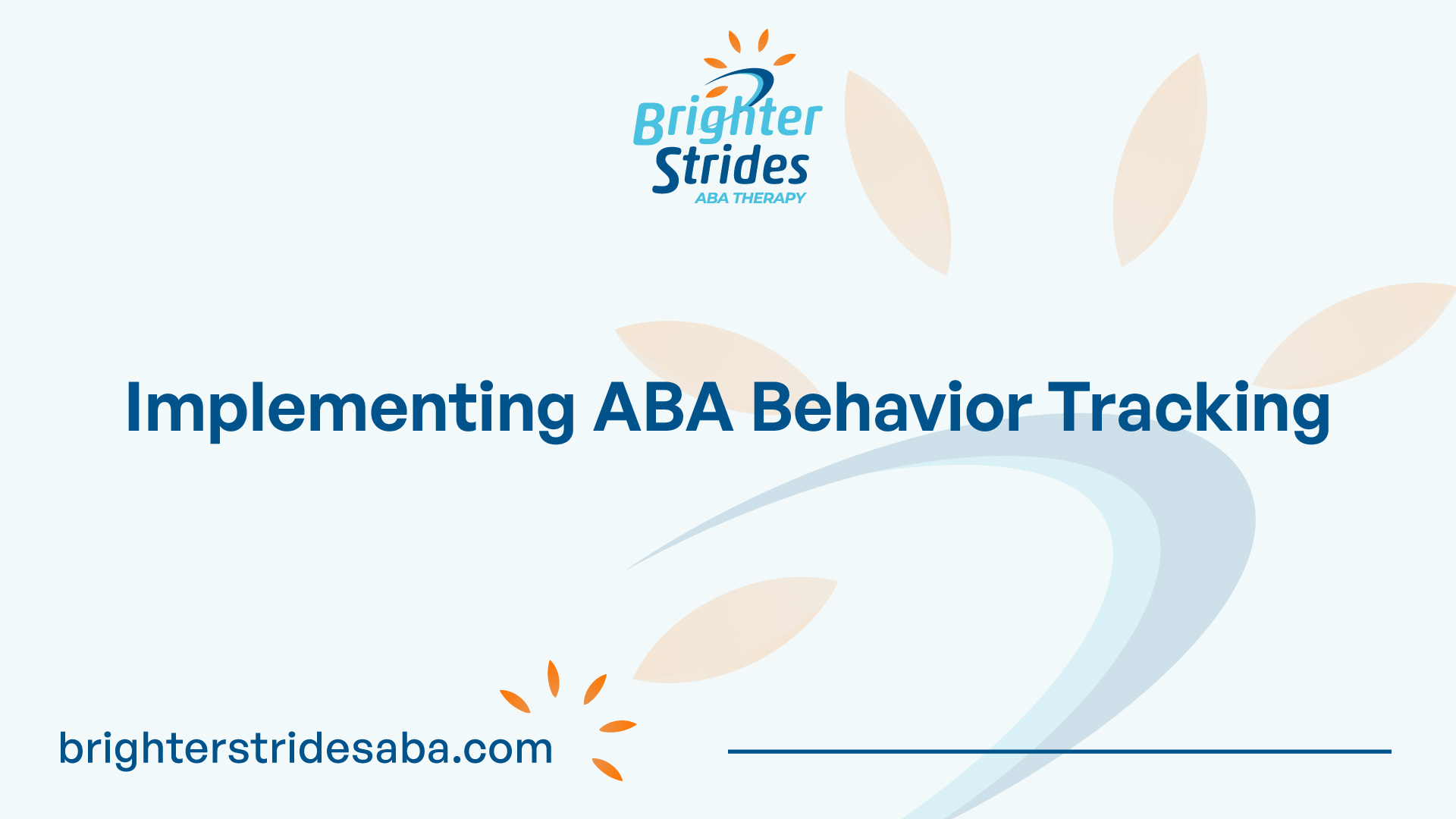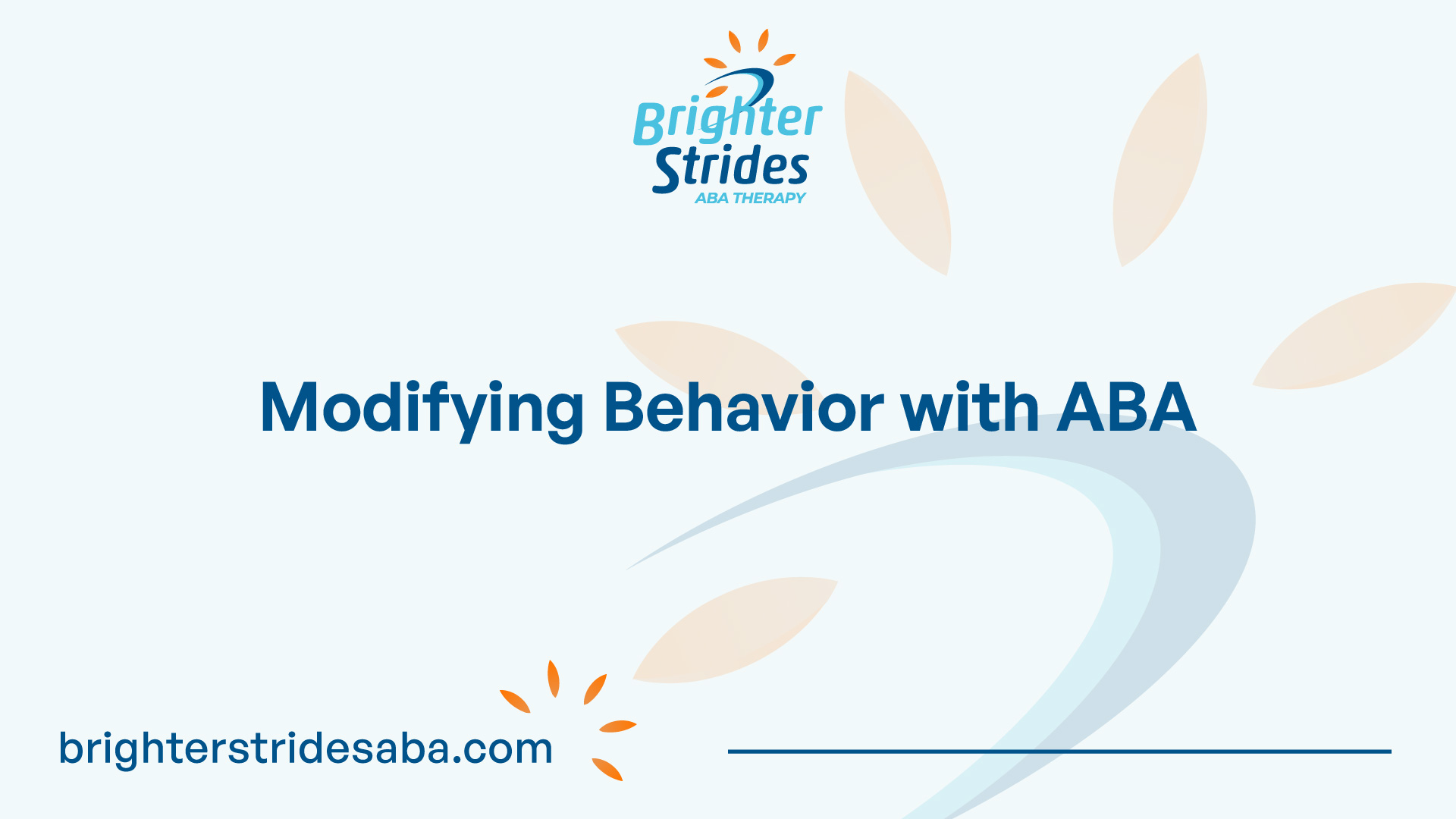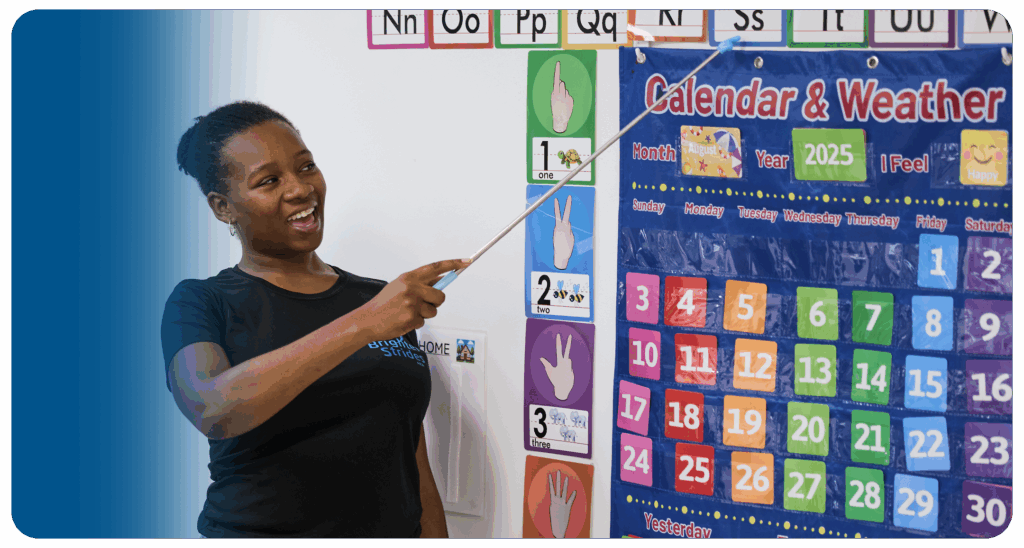
Understanding ABA Behavior Tracking
In the field of Applied Behavior Analysis (ABA), behavior tracking plays a crucial role in assessing, analyzing, and modifying behaviors. ABA is a scientific approach that focuses on understanding and improving behavior by applying evidence-based techniques. Behavior tracking is an essential component of ABA, providing valuable data that helps in the development and implementation of effective intervention strategies.
Introduction to ABA
ABA is a discipline rooted in the principles of behaviorism, which emphasizes the understanding of behavior as a product of environmental factors and reinforcement. It involves the systematic observation and analysis of behavior, with the goal of bringing about meaningful and positive changes in individuals’ lives. ABA techniques are widely used to address a range of behavioral challenges and promote skill acquisition in various settings, including schools, homes, and clinics.
Importance of Behavior Tracking
Behavior tracking is vital in ABA because it allows practitioners to gather objective and measurable data about an individual’s behavior over time. This data serves as the foundation for conducting a functional analysis and developing effective intervention strategies. By systematically tracking and recording behaviors, ABA professionals can gain insights into the antecedents and consequences that influence behavior, identify patterns and trends, and evaluate the effectiveness of interventions.
Accurate behavior tracking enables practitioners to set clear and measurable behavioral goals for individuals. It allows for the identification of target behaviors that need intervention and helps establish a baseline against which progress can be measured. By continuously monitoring and tracking behaviors, ABA professionals can assess the effectiveness of intervention techniques and make adjustments as needed.
Behavior tracking methods can vary depending on the individual’s needs and the specific goals of the intervention. Common data collection methods in ABA include direct observation, event recording, interval recording, and ABC (Antecedent-Behavior-Consequence) recording. These methods provide a systematic way to collect and analyze data, enabling practitioners to make informed decisions about the strategies and techniques to employ.
In summary, behavior tracking is an integral part of ABA, providing invaluable information that drives intervention decisions and facilitates positive behavior change. Through accurate and systematic tracking, ABA practitioners can better understand the factors influencing behavior, develop targeted intervention plans, and monitor progress over time. By utilizing the power of behavior tracking, ABA professionals can make a significant impact on individuals’ lives and help them achieve their full potential.

Implementing ABA Behavior Tracking
Tracking behavior is an essential component of Applied Behavior Analysis (ABA) therapy. By monitoring and analyzing behavior, ABA practitioners can gain valuable insights into a person’s actions and make data-driven decisions to modify behavior effectively. In this section, we will explore two critical aspects of implementing ABA behavior tracking: setting behavioral goals and selecting appropriate data collection methods.
Setting Behavioral Goals
Setting clear and measurable behavioral goals is a crucial step in ABA therapy. Behavioral goals provide a target for intervention and help guide the assessment and treatment process. When setting behavioral goals, it’s important to consider the specific behaviors that need improvement and define them in observable and measurable terms. This allows for accurate tracking and evaluation of progress.
Behavioral goals should be individualized and tailored to the needs of each person. They can focus on various areas, such as communication, social skills, self-care, or academic performance. For example, a behavioral goal could be to increase the frequency of eye contact during social interactions or to improve self-help skills, such as independently tying shoelaces.
By setting behavioral goals, ABA practitioners and individuals participating in therapy can have a clear understanding of what they are working towards. These goals serve as a roadmap for intervention and provide a basis for data collection and analysis.
Data Collection Methods
Accurate and reliable data collection is essential for effective ABA behavior tracking. A variety of methods can be used to collect data, depending on the nature of the behavior and the individual’s abilities. Here are some common data collection methods used in ABA therapy:
- Direct Observation: Direct observation involves systematically observing and recording behavior in real-time. A trained observer notes the occurrence or non-occurrence of the target behavior, along with relevant details such as duration, intensity, or frequency. Direct observation can be done in naturalistic settings or structured environments, depending on the specific goals of the intervention.
- ABC (Antecedent-Behavior-Consequence) Recording: ABC recording focuses on identifying the antecedents (events that precede behavior), the behavior itself, and the consequences (events that follow the behavior). This method helps identify patterns and potential triggers for the behavior, as well as the consequences that may be maintaining it.
- Checklists and Rating Scales: Checklists and rating scales provide a structured way to collect data on specific behaviors or skills. They typically involve a list of behaviors or skills that are rated or checked off based on their occurrence or level of performance. Checklists and rating scales are useful for tracking progress over time and for gathering information from multiple observers.
- Electronic Data Collection: With advancements in technology, electronic data collection tools have become increasingly popular in ABA therapy. These tools allow for efficient and accurate data collection through the use of mobile devices, tablets, or specialized software. Electronic data collection can streamline the process, reduce errors, and facilitate data analysis.
Choosing the appropriate data collection method depends on various factors, including the nature of the behavior, the individual’s abilities, and the goals of the intervention. A qualified ABA practitioner will select and implement the most suitable data collection method to ensure accurate and meaningful tracking of behavior.
By setting behavioral goals and using appropriate data collection methods, ABA practitioners can effectively track behavior and make informed decisions regarding intervention strategies. The data collected serves as the foundation for further analysis and modification of behavior. In the next section, we will explore the process of analyzing ABA behavior data, including data interpretation and identifying patterns and trends.
Analyzing ABA Behavior Data
Once behavior data has been collected through ABA behavior tracking, it is essential to thoroughly analyze the data to gain valuable insights into the individual’s behavior. This analysis allows behavior analysts to make informed decisions and develop effective intervention strategies. Two key aspects of analyzing ABA behavior data include data interpretation and identifying patterns and trends.
Data Interpretation
Data interpretation is the process of examining the collected data to extract meaningful information. Behavior analysts carefully review the data to identify important variables, patterns, and trends. This step involves systematically organizing and categorizing the data to facilitate analysis [1].
During data interpretation, analysts may use various statistical methods to quantify and summarize the data. They may calculate measures such as frequency, duration, latency, and intensity of behaviors. These measures provide a quantitative understanding of the behavior and allow for comparisons across different data points.
Analyzing the data also involves looking for relationships between behaviors and their environmental factors. This includes identifying antecedents (events or stimuli that occur before the behavior) and consequences (events or stimuli that follow the behavior). Understanding these relationships helps behavior analysts determine the functions of behaviors and guides the development of effective intervention strategies [2].
Identifying Patterns and Trends
Identifying patterns and trends in the behavior data is crucial for understanding the individual’s behavior over time. Behavior analysts carefully examine the data to look for consistent patterns of behavior, such as increases or decreases in specific behaviors or changes in the frequency of occurrence.
By identifying patterns, analysts can develop hypotheses about the factors influencing the behavior. For example, they may observe that a particular behavior occurs more frequently in certain settings or in response to specific stimuli. These patterns can guide the development of targeted interventions to address the specific behavioral challenges the individual is facing [3].
Trends in behavior data provide valuable information about the effectiveness of intervention strategies. If positive changes in behavior are observed consistently over time, it suggests that the intervention is successful. Conversely, if negative trends are identified, it may indicate the need for modifications or adjustments to the intervention plan [4].
The process of analyzing behavior data is an ongoing and iterative one. As new data is collected, behavior analysts continue to interpret the data, refine their understanding of the behavior, and make adjustments to the intervention strategies as needed [5]. This iterative process ensures continuous improvement and increases the chances of successful behavior modification.
By carefully interpreting the data and identifying patterns and trends, behavior analysts can gain valuable insights into an individual’s behavior. This information forms the foundation for developing effective ABA intervention strategies and reinforcement techniques. Through diligent analysis, behavior analysts can make informed decisions that lead to positive behavior change and improved outcomes in individuals receiving ABA therapy.

Modifying Behavior with ABA
Once behavior data has been collected and analyzed, the next step in Applied Behavior Analysis (ABA) is to modify behavior using various intervention strategies and reinforcement techniques.
Intervention Strategies
Intervention strategies in ABA focus on teaching individuals new skills and addressing problematic behaviors. These strategies are tailored to the specific needs and goals of each individual. ABA intervention strategies are evidence-based and rely on the principles of behavior analysis to bring about positive behavior change.
Some common intervention strategies used in ABA include:
- Discrete Trial Training (DTT): DTT breaks down complex skills into smaller, more manageable steps. It involves providing clear instructions, prompting correct responses, and reinforcing desired behaviors. DTT is particularly effective for skill acquisition in individuals with developmental disabilities.
- Natural Environment Teaching (NET): NET takes advantage of naturally occurring learning opportunities in the individual’s environment. It involves embedding teaching moments into everyday activities and routines. NET promotes generalization of skills by teaching them in natural contexts.
- Functional Communication Training (FCT): FCT teaches individuals alternative communication strategies to replace problematic behaviors such as aggression or self-injury. By teaching effective communication skills, FCT aims to reduce frustration and improve overall behavior.
- Social Skills Training: Social skills training focuses on teaching individuals appropriate social behaviors and interactions. This may include teaching skills such as turn-taking, sharing, initiating conversations, and maintaining eye contact. Social skills training can be particularly beneficial for individuals with autism spectrum disorder (ASD) or social communication difficulties.
It’s important to note that intervention strategies should be individualized and based on a thorough assessment of the person’s strengths, needs, and preferences. A qualified behavior analyst will work closely with the individual and their support system to determine the most effective strategies for behavior modification. For more information on ABA therapy techniques, refer to our article on aba therapy techniques.
Reinforcement Techniques
Reinforcement techniques play a crucial role in behavior modification within the context of ABA. Reinforcement involves providing consequences that increase the likelihood of a desired behavior occurring again in the future.
Some commonly used reinforcement techniques in ABA include:
- Positive Reinforcement: Positive reinforcement involves providing something desirable or preferred immediately following a desired behavior. This can include verbal praise, tokens, access to preferred activities, or tangible rewards. Positive reinforcement helps to strengthen and maintain the desired behavior.
- Negative Reinforcement: Negative reinforcement involves removing or avoiding something aversive or unpleasant immediately following a desired behavior. For example, if a child completes their homework, they may be excused from a chore they dislike. Negative reinforcement increases the likelihood of the desired behavior occurring again to avoid or escape the unpleasant stimulus.
- Token Economy: Token economy systems involve using tokens or points that can be exchanged for desired rewards. This system allows individuals to earn tokens for engaging in desired behaviors, which can then be exchanged for preferred items, activities, or privileges. Token economies are commonly used in schools, therapeutic settings, and home environments to reinforce positive behaviors consistently.
- Social Reinforcement: Social reinforcement involves providing praise, attention, or other forms of social acknowledgment following a desired behavior. This can include verbal praise, a high-five, a smile, or a positive gesture. Social reinforcement helps to strengthen social interactions and promotes positive relationships.
It’s important to note that reinforcement techniques should be individualized and based on the person’s preferences and motivation. A qualified behavior analyst will work closely with the individual and their support system to determine the most effective reinforcement strategies. For more information on reinforcement methods in ABA, refer to our article on aba reinforcement methods.
By employing intervention strategies and utilizing appropriate reinforcement techniques, behavior modification can be achieved effectively within the framework of ABA. The goal is to help individuals develop and maintain positive behaviors while reducing problematic behaviors. The ongoing evaluation of progress and adjustment of strategies are vital components of the ABA process, as discussed in the next section on ABA progress evaluation.
ABA Progress Evaluation
Once behavior tracking has been implemented in ABA therapy, it is crucial to regularly evaluate the progress of the individual. This evaluation allows practitioners to monitor behavior changes and make necessary adjustments to strategies for optimal outcomes.
Monitoring Behavior Changes
Monitoring behavior changes is a fundamental aspect of ABA progress evaluation. Through continuous observation and data collection, practitioners can track the effectiveness of the intervention strategies and determine if the desired behavioral goals are being met.
To monitor behavior changes effectively, it is essential to establish clear and measurable goals in the initial stages of therapy. These goals serve as benchmarks against which progress can be measured. The goals should be specific, observable, and attainable, enabling the practitioner to track the individual’s progress accurately.
Data collection methods, such as direct observation, checklists, and rating scales, play a crucial role in monitoring behavior changes. They provide objective and measurable information about the individual’s behavior over time. Regular data collection allows practitioners to identify patterns, trends, and progress in the individual’s behavior [6].
By comparing data collected at different time points, practitioners can assess the effectiveness of the intervention strategies and determine whether adjustments are needed. These adjustments are essential to ensure that the therapy remains tailored to the individual’s specific needs and goals.
Adjusting Strategies
Adjusting strategies is a key component of ABA progress evaluation. As practitioners monitor behavior changes and review the data collected, they may identify areas where the current strategies are not producing the desired outcomes. In such cases, it is crucial to make timely adjustments to the intervention plan.
Effective strategies for adjusting ABA interventions are based on careful analysis of the behavior data and consideration of the individual’s unique needs. This process involves reviewing the data, identifying patterns or trends, and determining the factors that may be contributing to the observed behavior changes [6].
Adjustments may involve modifying the reinforcement techniques [7].
Regular communication and collaboration between the practitioner and the individual’s caregivers or support team are crucial during this process. By sharing and discussing the behavior data and progress, everyone involved can contribute their insights and perspectives, leading to more effective adjustments.
The goal of adjusting strategies in ABA is to continually refine and optimize the intervention plan to ensure the individual’s progress and success. By being responsive and adaptive to the individual’s changing needs, practitioners can create a more tailored and effective approach to behavior change.
In the next section, we will explore real-life applications and share testimonials of ABA success stories, highlighting the positive impact of ABA therapy and behavior tracking in various contexts [6].
ABA Success Stories
Real-Life Applications
The power of ABA behavior tracking is evident in its real-life applications. Countless individuals have benefited from the implementation of ABA techniques and the use of behavior tracking to monitor progress and make data-driven decisions. Here are some examples of how ABA has been successfully applied in various contexts:
Citation 1:
In a school setting, ABA behavior tracking has proven to be effective in improving academic performance and reducing challenging behaviors. By tracking behaviors and analyzing data, educators can identify patterns, implement targeted interventions, and modify strategies as needed to support students with diverse learning needs.
Citation 3:
ABA behavior tracking has also shown promising results in clinical settings. For individuals with autism spectrum disorder (ASD), ABA techniques combined with behavior tracking have been instrumental in improving social skills, communication, and daily living skills. Through systematic data collection and analysis, therapists can tailor interventions to meet the specific needs of each individual.
Citation 5:
In workplace environments, ABA behavior tracking has been utilized to enhance employee performance and promote a positive work culture. By monitoring behaviors, such as productivity, punctuality, and interpersonal interactions, employers can provide targeted feedback and reinforcement to motivate employees and foster a productive work environment.
Citation 7:
ABA behavior tracking has also been instrumental in assisting individuals with developmental disabilities in community-based settings. By tracking behaviors and identifying triggers, caregivers and support staff can implement strategies to promote independence, safety, and community integration. This can significantly enhance the quality of life for individuals with disabilities and their families.
Citation 9:
ABA behavior tracking has even been applied in self-improvement and personal development contexts. Individuals who track their own behaviors can gain valuable insights into their habits, routines, and progress towards personal goals. By using behavior tracking techniques, individuals can identify areas for improvement, modify their behaviors, and achieve personal growth.
These real-life applications of ABA behavior tracking demonstrate the versatility and effectiveness of this approach in various domains. By using data-driven techniques and strategies, ABA has the potential to make a positive impact on individuals of all ages and abilities.
Testimonials
Here are some testimonials from individuals who have experienced the benefits of ABA behavior tracking firsthand:
- “Since implementing ABA behavior tracking in my classroom, I have seen a remarkable improvement in student engagement and academic performance. It has truly transformed the way I support my students.” – Educator
- “ABA behavior tracking has been a game-changer for my child with autism. Through consistent data collection and analysis, we have been able to identify triggers for challenging behaviors and implement effective strategies to support their development.” – Parent
- “As a manager, ABA behavior tracking has allowed me to better understand the performance and needs of my team members. By providing targeted feedback and reinforcement based on the data, I have seen a significant improvement in productivity and morale.” – Supervisor
- “Tracking my own behaviors using ABA techniques has helped me identify patterns and make positive changes in my life. It has given me the tools to break unhealthy habits and achieve personal growth.” – Individual
These testimonials highlight the positive impact of ABA behavior tracking on individuals, families, educators, and professionals across various settings. The success stories and real-life applications of ABA inspire hope and encourage further exploration of this powerful approach in behavior analysis.





